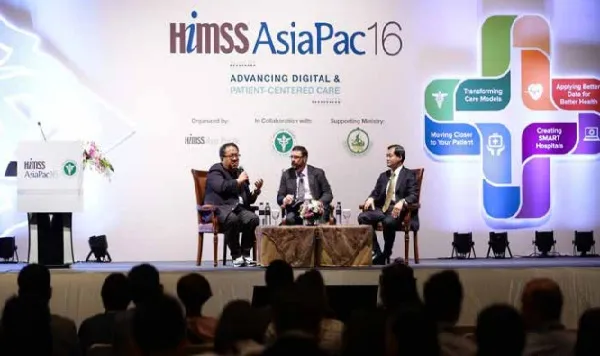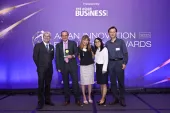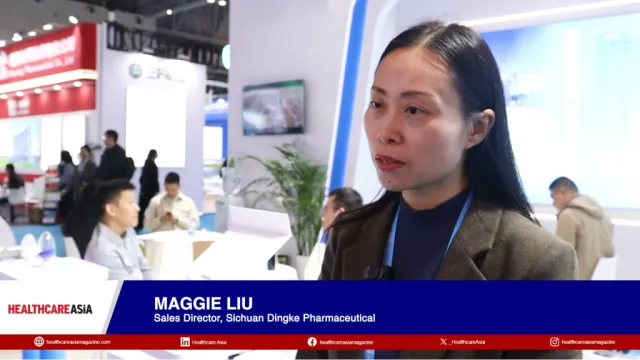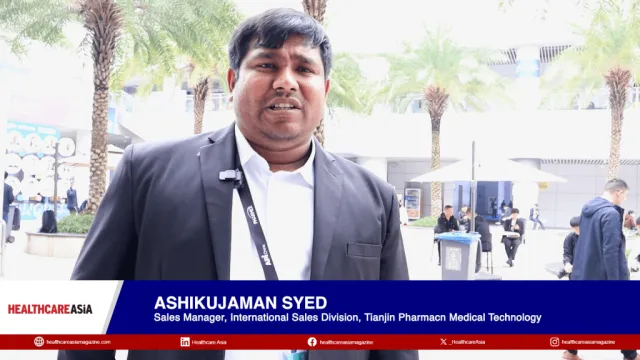
Asia's healthcare industry players zero in on patient-centred care
Healthcare Information and Management Systems Society (HIMSS) Asia Pacific emphasised the sector’s need to re-engineer current healthcare models to combat chronic diseases.
The 2016 HIMSS AsiaPac16 Conference and Exhibition’s sessions emphasised patient-centred care. Healthcare Information and Management Systems Society (HIMSS) Asia Pacific recently welcomed over 1,500 delegates to its annual conference, which was convened this year under the theme Advancing Digital and Patient-Centred Care. The main conference education program had four tracks: Creating SMART Hospitals, Applying Better Data for Better Health, Transforming Care Models, and Moving Closer to Your Patient.
The first day of the event which discussed the tracks Moving Closer to Your Patient and Creating SMART Hospitals, began with a plenary session by Dr. Richard Milani, chief clinical transformation Officer at Ochsner Health System, where he emphasised the need to re-engineer current healthcare models to combat chronic disease.
His presentation revealed that 62% of deaths in Southeast Asia are from chronic disease and mobile health apps can play a big role in improving patient’s health. A new delivery model suggested for chronic disease patients include frequent data points, social support, analytics engine, and specialised and integrated tools tailored for each patient including health apps, medication adjustment, diet planning and exercise regimes.
Patient focus
Under the Moving Closer to Your Patient track, Dr. Chong Yoke Sin, CEO, IHiS, delivered a presentation that showcased the story of Singapore as a Smart Nation. Her presentation noted that the Internet of Things is the leading trend in healthcare, — home as well as community —with wireless sensor-based systems gathering patient medical data available for analytics, removing the limitations of human-entered data, and ultimately improving treatment. Big data and healthcare analytics will also play an increasingly critical role in eliminating risks and providing operations and decision support.
Dr. Jonathan Schaffer, MD, Cleveland Clinic, presented on web-based portals for oncology patients. The buzzword social media came up in his session as a critical tool that patients use to communicate with family and friends, get support and reduce feelings of isolation and associated stresses. Thus by developing appropriate digital applications, it is possible to reduce stressors that can influence the care of cancer patients, and in turn improving and enhancing their quality of life.
Another highlight of this track was the session by Dr. Sean Frederick, chief medical officer, Allscripts. He touched upon a topic close to every healthcare worker’s heart: moving back to the heart of healthcare and getting closer to the patient. His presentation poignantly pointed out that healthcare is behind the times in its use of technology.
Strategic collaborations
Rounding up the first day were discussions under the Creating SMART Hospitals track, which started with a panel discussion examining the strategic framework to creating SMART hospitals moderated by John Daniels, global vice president, HIMSS Analytics.
Further, Ms. Renea Collins, clinical director eHealth from Metro South Health in Australia spoke on the strategic partnerships that led to improved adoption and safety during the clinical transformation implemented for Princess Alexandra Hospital (PAH). There was a need to transform because of increasing expectations from clinicians and community, need for continuous improvement, changing practice model, service complexity and so on.
Mr. Eric Woo from ECRI Institute Asia Pacific shared in his presentation the top 10 healthcare IT hazards and provided risks, evidence, and solutions. Hazards included poor data integrity, poor usability, missing safeguards (leading factor in CDS events), mishandling of timed medication orders, and truncation of information on display.
The last track speaker was Mr. Andy Tan, principal medical informatics at JurongHealth Services, Singapore. He shared about pathways to improve care coordination. At Ng Teng Fong General Hospital (NTFGH), there were 348 pathways used over the last 12 months, out of which 203 were hip fracture pathways and 145 were heart failure pathways. The hospital created savings using the pathways and the pathways also showed promise in reducing patient length of stay.
Using data effectively
The second day conference began with Dr. William Hersh, professor and chair, Department of Medical Informatics and Clinical Epidemiology, Oregon Health & Science University’s presentation. Dr. Hersh talked about how advancing digital and patient-centred care requires competent clinicians and informatics professionals. He said that there is a growing cadre of clinicians who need to become leaders in clinical informatics and advance the path forward.
He highlighted that in order to achieve and demonstrate competence, education and training is necessary for informatics professionals, clinicians, and even patients and consumers. He introduced the audience to the 10x10 program. This course provided an entry point for those who wished to further their studies or develop their careers in the biomedical and health informatics field. The course was called as such because when launched in 2005, the aim was to educate 10,000 healthcare and related professionals in biomedical and health informatics by 2010. The first of the second day’s tracks, Applying Better Data for Better Health, started with Mr. John Daniels, global vice president, Healthcare Advisory Services Group, HIMSS Analytics, USA. He talked about the formula to successful data analytics.
Public-private ICT interoperability
Another highlight was Mr. Bret Watson’s (Enterprise Architect, The Health Architects, Australia) presentation, focused on public-private ICT interoperability. He shared that due to the dispersed population and need to support all patients and multiple treatment pathways, Western Australia Health (WA Health) consumes a large proportion of the State’s operating budget. Thus, there is a strong drive to reduce the price per treatment and one avenue to do so is to create public-private partnerships with private hospital operators operating various hospitals, particularly in the metropolitan area.
Dr. Dinesh Jain, vice president – Clinical Data Analytics from Max Healthcare Institute, India, presented on the Experience with Analyzing Health Data for Patient Care and Safety – Linking Risk with Action for Better Patient Outcome.
Dr. Jain explained that while healthcare has data, it needs solutions. Solutions include analytic tools, comprehensive data warehousing and data marts, as well as clinical decision support systems. Under the fourth track, Transforming Care Models, Mr. Peter Morgan, senior consultant, Singapore and SEA Branch, Gevity Consulting, spoke out on the increasingly crucial role of information systems amidst public health crises. Dr. Stephen Chu, co-chair, HL7 Patient Care Workgroup and Principal Clinical Informacist then discussed about transforming care through care management, using standard care plan model and care coordination services. Currently, chronic condition management is facing multiple challenges resulting in poor outcomes.



















 Advertise
Advertise





